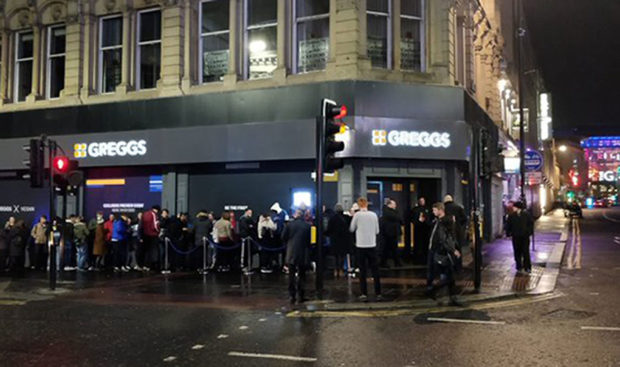
The first question is always the same. “But what about bacon?”
Then, in quick succession, after I tell someone I am vegan, comes “How can you live without cheese?” and “Where do you get your protein from?”
I can’t blame people for being curious, suspicious and often sceptical – after all, even vegans and vegetarians were not born clutching a box of Linda McCartney’s sausages.
And it wasn’t so long ago that I too would scoff at the idea of giving up meat, professing my love for bacon as I shoved glistening rashers of greasy pork into a warm buttery roll and, thereafter, my Ed Milliband-esque gaping mouth.
In days gone by, the mental image of sizzling bacon and eggs alone would be enough to make me salivate. Now, it has about the same appeal as eating from the floor of an NCP car park.
So, what changed? Two years ago, after a long stretch of being vegetarian, I watched Carnage, a feature-length mockumentary directed by comedian Simon Amstell. Set in 2067, the entire UK has gone vegan and older generations are struggling to come to terms with their carnivorous past, with many attending support groups to cure their shame.
Through creative imagining of how a nation of meat-lovers became plant-based, the smart, funny writing quickly places the realities of the meat and dairy industry in stark terms (something we all conveniently ignore while piling up our plates) without feeling like a sermon.
After that eggs, milk, dairy, cheese and honey simply failed to whet my appetite. Wearing leather, silk and wool quickly followed suit.
At first, the transition can be difficult but it’s not long before shopping, cooking and eating out becomes second nature. Show me the back of a crisp packet and I’ll spot “milk powder” listed in the ingredients quicker than you can say lactose intolerance, and I know my cruelty-free beauty brands like the back of my hand.
At the risk of losing your interest, I won’t start listing all the reasons I believe the meat and dairy industry is inhumane and cruel – if you’re interested, you can look up the statistics and slaughterhouse camera footage on your own.
But I will ask you to question whether you would actually lose anything by giving up meat because, rest assured, it wouldn’t be your favourite meals.
Marks & Spencer, Tesco, Sainsbury’s and ASDA all have their own dedicated plant-based ranges, and Waterstones stock more than 9,000 books with “vegan” in the title.
What’s more, this month alone saw McDonald’s launch their very first Vegan Society-approved nugget meal, KFC now has a Quorn-like chicken burger, Subway introduced a Meatless Meatball Marinara, and, on Thursday, even Greggs added a vegan steak bake to their menu, alongside their vegan sausage roll which last year helped overall sales soar by 13.4%.
All those calories and not a single animal product – or lentil salad – in sight.
Of course, these companies are more interested in their bottom line than animal welfare, and many ethical vegans would still shun their establishments as a point of principle.
But if easy access to veggie meals encourages people to consider eating less meat, and dispels the myth that veganism is somehow elitist and expensive, I would consider that a step in the right direction.
Plus, animal rights is just one of many reasons to start eating less meat and more plants. In a recent survey of more than 1,000 UK adults, conducted by Mintel, 49% of respondents who were interested in cutting down their meat consumption said they would do so for health reasons. Worries over the environment followed closely behind and, indeed, a 2018 Oxford University study concluded that “avoiding meat and dairy is the single biggest way to reduce your impact on the earth”.
When the Vegan Society was founded in 1944, the general consensus was that saying no to meat and dairy would make you pale, iron-deficient, thin and malnourished. But, then again, we also thought smoking cigarettes was good for your throat and lungs.
Times and advice have changed, and documentaries such as Netflix’s The Game Changers are proving you can live a healthy life on plants alone, with a significantly reduced risk of cholesterol, heart disease and diabetes.
More than 300,000 people have signed up for Veganuary, compared to just 1,500 when the campaign was launched in 2014, and I hope many consider taking the plunge full-time.
Being vegan isn’t about being perfect – there’s no such thing as being “100% vegan” and we’ll all have accidental slip-ups from time to time.
But simply trying and making a few small changes could make the world of difference for you and our planet.

Enjoy the convenience of having The Sunday Post delivered as a digital ePaper straight to your smartphone, tablet or computer.
Subscribe for only £5.49 a month and enjoy all the benefits of the printed paper as a digital replica.
Subscribe